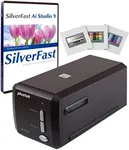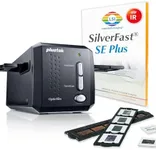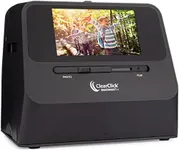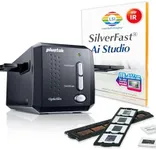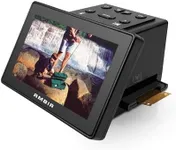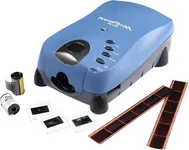Buying Guide for the Best Digital Slide Scanners
Choosing the right digital slide scanner can be a game-changer for anyone working with slides, whether for educational, professional, or personal purposes. The right scanner will help you digitize your slides efficiently and with high quality, preserving your memories or work in a digital format. To make an informed decision, it's important to understand the key specifications and how they align with your needs. Here are the main specs to consider when selecting a digital slide scanner.ResolutionResolution refers to the amount of detail the scanner can capture, usually measured in dots per inch (DPI). Higher resolution means more detail and clarity in the scanned image. For general use, a resolution of 2400 DPI is often sufficient. For professional or archival purposes, you might want a scanner with 4800 DPI or higher. Consider what you will be using the scanned images for; if you need high-quality prints or detailed enlargements, opt for a higher resolution.
Scan SpeedScan speed indicates how quickly the scanner can digitize a slide, usually measured in seconds per slide. Faster scan speeds can save you a lot of time, especially if you have a large number of slides to scan. If you are scanning slides occasionally, a slower speed might be acceptable. However, for large projects or professional use, a faster scanner will be more efficient and less time-consuming.
Color DepthColor depth, measured in bits, determines the range of colors the scanner can capture. Higher color depth means more accurate and vibrant colors. A color depth of 24-bit is generally sufficient for most users, providing good color reproduction. For professional photographers or archivists who need the highest color accuracy, a 48-bit color depth might be more appropriate. Think about the importance of color accuracy in your work when choosing the color depth.
Dynamic RangeDynamic range measures the scanner's ability to capture the darkest and lightest areas of a slide, usually indicated by a Dmax value. A higher Dmax value means better detail in shadows and highlights. For general use, a Dmax of around 3.0 is adequate. For professional or archival purposes, look for a scanner with a Dmax of 4.0 or higher. Consider the type of slides you are scanning; if they have a lot of contrast, a higher dynamic range will be beneficial.
Software and CompatibilityThe software that comes with the scanner can greatly affect your experience. Good software will offer features like dust and scratch removal, color correction, and batch scanning. Ensure the scanner is compatible with your operating system and any photo editing software you use. If you need advanced editing features or plan to scan a large number of slides, look for scanners with robust software options. Compatibility with your existing setup is crucial for a smooth workflow.
ConnectivityConnectivity options determine how you can connect the scanner to your computer or other devices. Common options include USB, Wi-Fi, and sometimes even Bluetooth. USB is the most reliable and widely used, but Wi-Fi can offer more flexibility, especially if you want to place the scanner away from your computer. Consider your workspace and how you plan to use the scanner when choosing the connectivity options. If you need to move the scanner around or use it with multiple devices, wireless options might be more convenient.
Size and PortabilityThe size and portability of the scanner can be important depending on your workspace and how often you need to move it. Smaller, portable scanners are great for limited space and easy storage, but they might lack some advanced features. Larger scanners often offer better performance and more features but require more space. Think about where you will be using the scanner and how often you need to move it. If space is a concern, a compact model might be the best choice.



